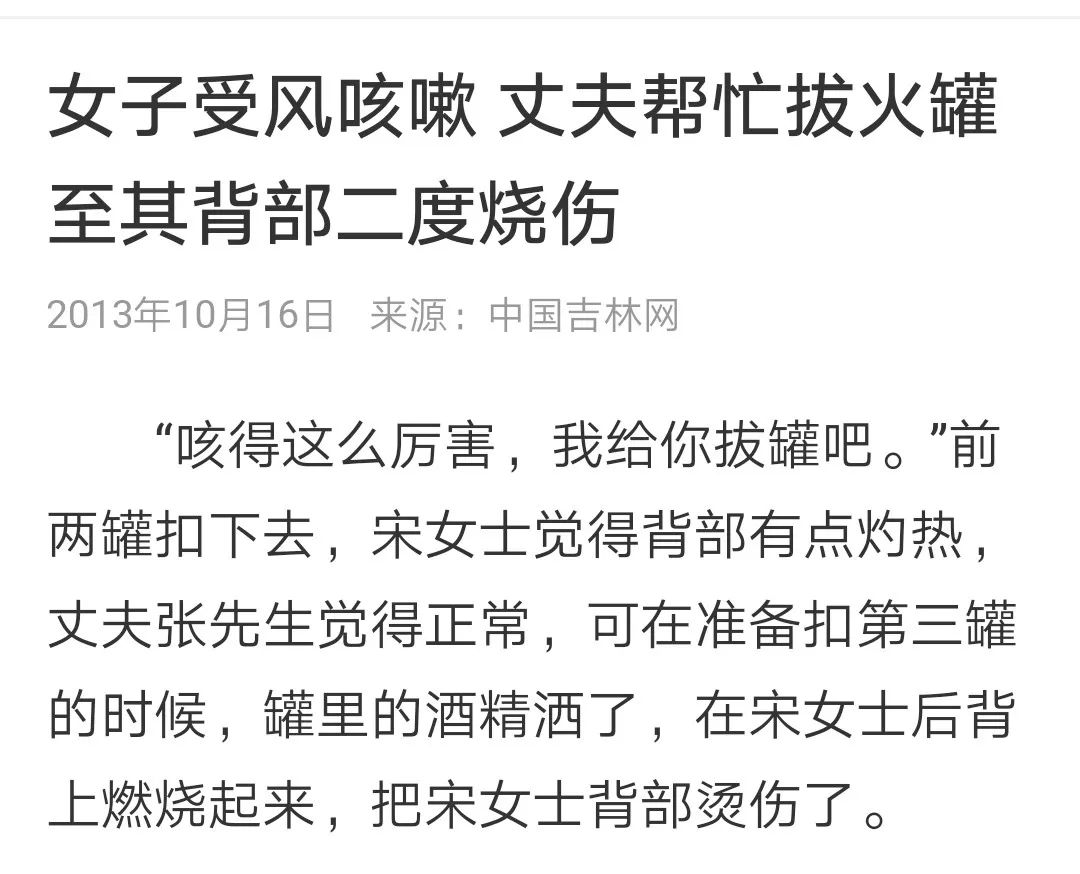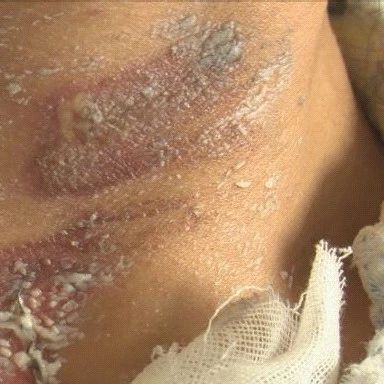Many people, when feeling unwell,
will opt for cupping therapy.
However, if not performed correctly,
it can lead to…
trouble!

On November 10th,
Ms. Zhao suffered burns to her neck and side abdomen
when alcohol used for cupping spilled on her
at a beauty salon in Daxu Town.
A search online reveals that
there are indeed many dangerous situations caused by cupping.


These cupping precautions are essential to understand!
Who Should Avoid Cupping
1. Individuals with severe heart disease.
2. Those with bleeding disorders.
3. Patients with tumors.
4. Individuals with active pulmonary tuberculosis.
5. Pregnant women and women during their menstrual period.
Some Important Cupping Precautions
1. Cupping and bathing: which comes first?
Many people who enjoy bathing say, “Cupping and bathing are both essential.” Indeed, warm bath water and warm cupping can be quite comfortable. However, the order of these activities is crucial. It is acceptable to bathe after cupping, but one should never bathe immediately after cupping.
After cupping, the skin is in a relaxed state, and bathing—especially with cold water—can easily damage or inflame the skin. Cold water can further irritate the skin and lead to chills, so it is advisable not to bathe immediately after cupping.
2. Is longer cupping time better?
Many believe that cupping should last at least half an hour, and some think that the appearance of blisters indicates effective cupping, especially among the elderly. But is longer cupping time truly better?
The duration of cupping depends on the size, material, and negative pressure of the cups. Generally, it is advisable to limit cupping to no more than ten minutes from the moment the flame is extinguished until the cups are removed. The primary principle of cupping is based on negative pressure, not duration. Prolonged cupping under high negative pressure can harm the skin and potentially lead to skin infections.
3. Can the same area be cupped repeatedly?
Some believe that if one cupping session is ineffective, repeating it will yield results. This determination, while commendable, is not advisable. Repeated cupping on the same area can lead to skin issues such as redness, swelling, and damage, which can be counterproductive.
Common Cupping Contraindications at Home
1. First, assess the constitution of the person receiving cupping. Those with excessively weak constitutions should avoid cupping.
2. Pregnant women and elderly individuals with heart disease should exercise caution with cupping. Cupping on the lumbar and abdominal areas of pregnant women is prohibited due to the risk of miscarriage. The negative pressure during cupping can cause pain, which most people can tolerate, but elderly patients with heart conditions may experience exacerbation of their symptoms under such stimulation.
3. Patients with skin lesions or skin diseases should not undergo cupping.
4. Cupping should not exceed a duration of eight minutes to avoid blistering (especially for those with diabetes, as blistering increases the risk of infection).
5. If blisters occur post-cupping, those with a diameter of less than 1 mm (fewer than three per cup) can be left untreated as they will absorb naturally. However, if the diameter exceeds 1 mm, or if there are more than three blisters per cup, or if the individual has diabetes or a compromised immune system, medical attention should be sought promptly.
6. Ensure the cleanliness of the cups. Each person should have their own set of cups, and they should be cleaned after every five uses to prevent infection.
7. There is currently no systematic research on the suitability of cupping for children. Due to their delicate skin and incomplete development, it is essential to consult a physician before cupping to ensure safety.
Reported by Xuzhou All-Media Journalist/Wu Li and Xu Jiyao
Editor/Liu Qing, Chief Editor/Shang Jianfei, Internet Director/Meng Baoxiang

If you’ve read this far, give a thumbs up before you go!
before you go!

